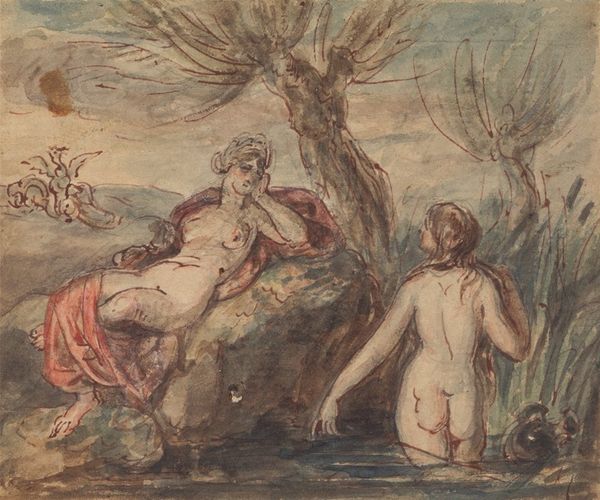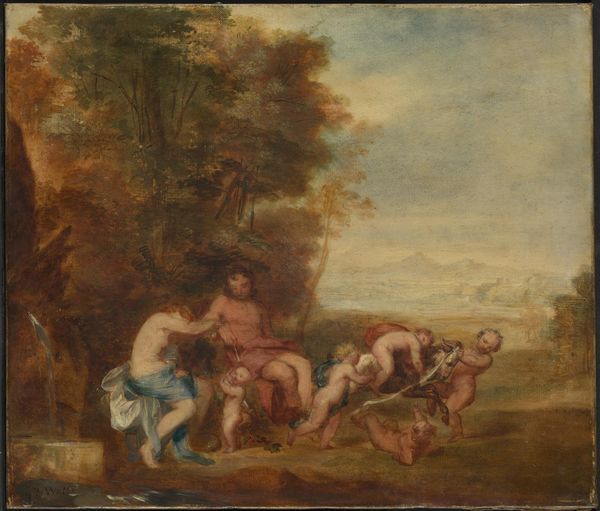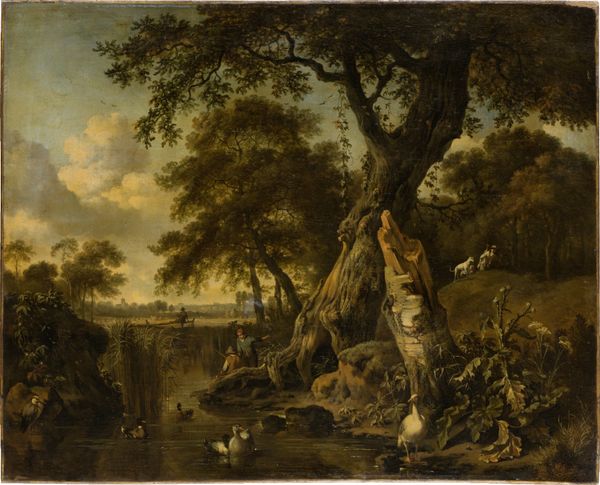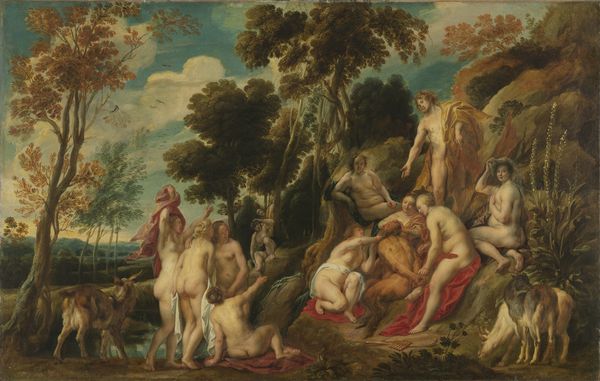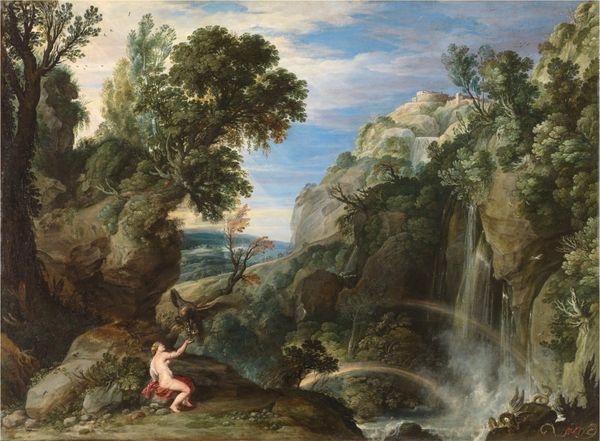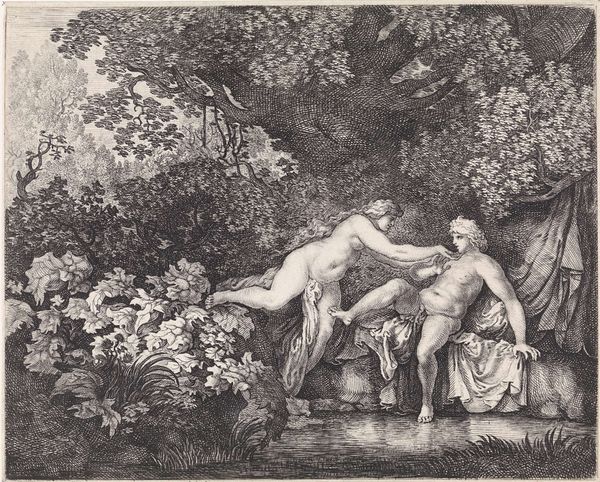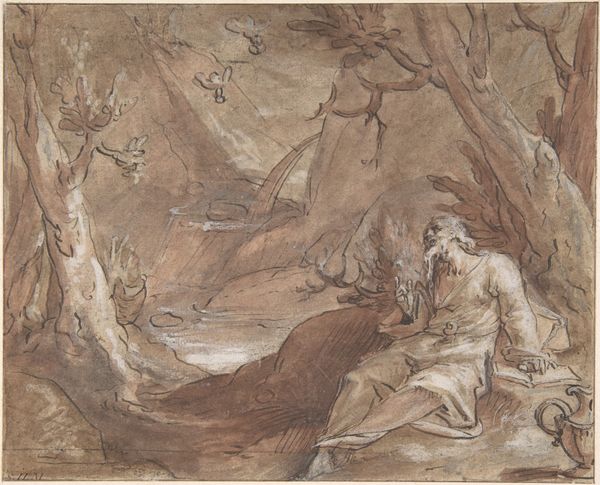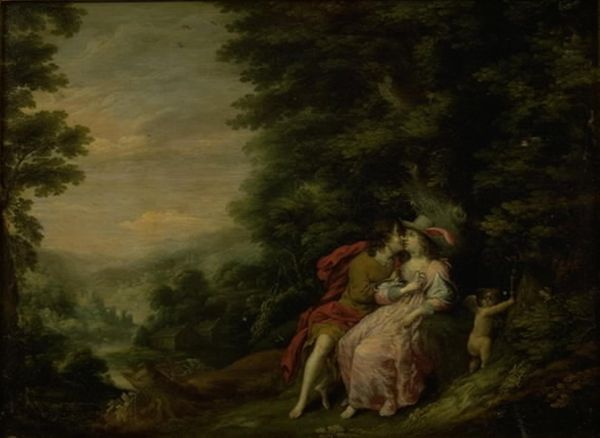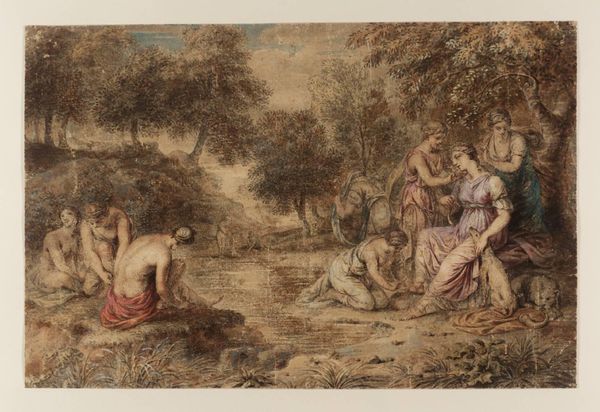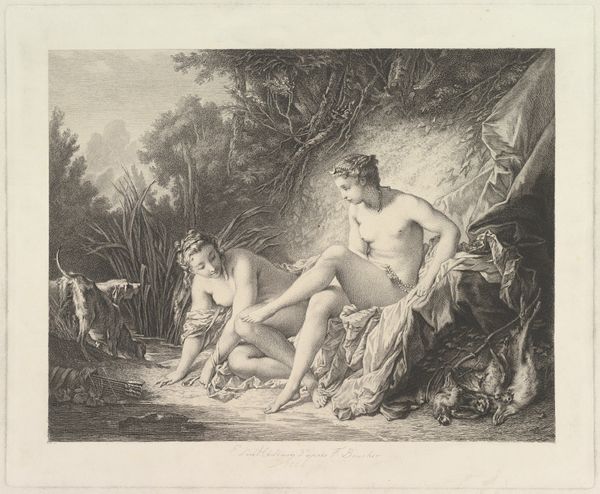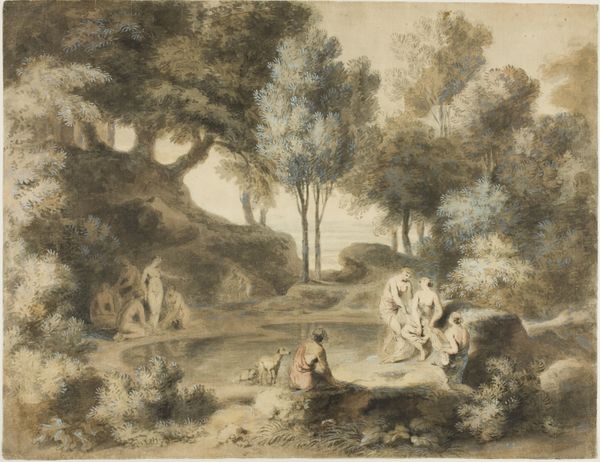
drawing, print, sculpture
#
gouache
#
drawing
# print
#
possibly oil pastel
#
coloured pencil
#
underpainting
#
sculpture
#
pastel chalk drawing
#
men
#
painting painterly
#
watercolour bleed
#
watercolour illustration
#
watercolor
#
warm toned green
Dimensions: sheet: 10 7/8 x 15 3/8 in. (27.6 x 39 cm)
Copyright: Public Domain
Editor: So, this is Salomon Gessner’s "A Park with Figures at a Statue near Water," created around 1775. It looks like watercolor and gouache on paper, and it has such a tranquil, dreamy quality to it. I’m curious about how Gessner went about making this - what stands out to you in terms of its production? Curator: What fascinates me are the combined materials and the implied labor involved in crafting this seemingly idyllic scene. The blending of gouache and watercolor—each with distinct properties—suggests a layered process, doesn't it? Gouache providing opacity, perhaps building the statue's form, while watercolor offers the translucent washes of light across the landscape. Editor: Absolutely, the statue really does seem to stand out compared to the landscape, now that you point it out. Does this relate to artistic conventions or maybe even social commentary from that period? Curator: Indeed. Think about the source of these materials. Pigments derived from minerals, plants, perhaps even insects – all commodities traded and transformed by unseen hands. This landscape isn't just a pretty picture; it’s the result of extraction, processing, and commerce. The artist, Gessner, assembles these material components, and filters the pastoral ideal through the labor of others. The artwork invites us to ponder this hidden network. What kind of market dynamics enabled its creation? Editor: That’s really insightful! It's easy to get lost in the image, but thinking about the origin and preparation of the materials brings a whole new dimension. Curator: And doesn’t it prompt us to reconsider the value we assign to both the artwork and the labor that brought it into being? To reflect on art history through materiality opens doors to social, economic and practical considerations, far from just formal considerations. Editor: I see what you mean. Thanks for opening my eyes to considering what went into making this more than just artist's intention, but really what material and social circumstances allowed its making to be possible!
Comments
No comments
Be the first to comment and join the conversation on the ultimate creative platform.
